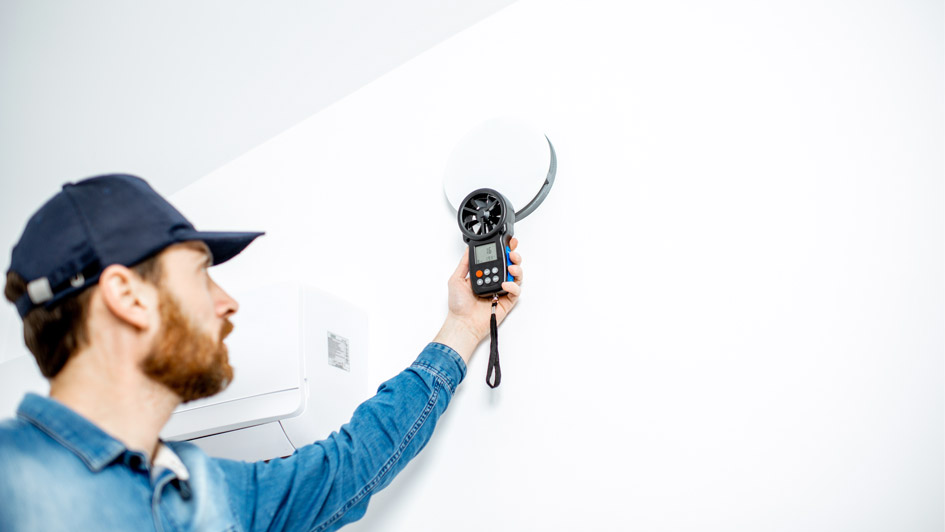August 5, 2023

How Homeowners Measure Their Indoor Air Quality
Although you probably don’t spend much time thinking about the quality of air in your St. Louis, MO home, your indoor air quality (IAQ) has a significant impact on your health and your general sense of well-being. People with low IAQs often struggle with fatigue, poor sleep quality, and a range of nasal and respiratory symptoms. Certain allergens and contaminants cause sniffling, sneezing, itchy, watery eyes, and dry skin and hair. Others can lead to serious illness and death. As such, it’s important to have a way to both identify and measure the toxins around you. Read on to discover several ways in which homeowners measure their IAQs.
Carbon Monoxide and Radon Monitoring
Current safety codes mean that most homeowners are already monitoring their indoor air. If you have any fuel-burning appliance in your home, you’re legally required to have a carbon monoxide detector installed. Carbon monoxide is a dangerous byproduct of fuel combustion. It’s the result of the incomplete burning of wood, heating oil, natural gas, and other combustible materials. While most exhaust gases are immediately routed out of the home, minute amounts can usually be detected around fuel-burning appliances themselves. This is why carbon monoxide detectors should always be installed at least 15 feet away from oil-fired or gas-fired furnaces.
The risk of carbon monoxide exposure rises whenever homeowners take steps to better seal their homes. Although creating an airtight home prevents heated and cooled air from seeping out of the building and reduces energy waste, adding too much insulation and thoroughly sealing all cracks and gaps in building materials can result in negative air pressure. When a home has negative air pressure, exhaust gases like carbon monoxide (CO) are pulled back into the living environment via a process known as back-drafting. The potential for back-drafting in homes with tight envelopes makes carbon monoxide detectors even more important.
According to the United States Environmental Protection Agency (EPA), homes in every region of the country are at risk of radon exposure. This includes homes of all ages and construction styles. Whether your home is fairly old or brand new, it’s a good idea to have radon detection devices put in. Radon is the result of uranium’s natural decay. It’s found in almost all soils, and it’s likely to be present in significant amounts just at and around your home’s foundation. Radon can enter your home by leaching through tiny or even micro-sized cracks in concrete, control joints, and floor-to-wall joints. Radon atoms can even penetrate the pores of concrete in areas where no structural damage exists.
To minimize the risk of radon exposure, homeowners can purchase and use radon test kits or radon detectors in low-lying areas. Having a radon detector is all the more important if you have one or more sump pumps installed. Slab leaks are another major risk factor for radon exposure. Radon test kits both identify the presence of radon and measure its amounts.
How Much Is Too Much?
With carbon monoxide, any measurable amount of this gas is too much. The presence of carbon monoxide in your home is an indication of problems. If your carbon monoxide detectors send out alerts, it means that your fuel-burning appliances or their venting systems are malfunctioning, your home has a back-draft, or your garage or other high-concentration areas aren’t adequately ventilated.
For radon, there are actually expected and acceptable amounts of this gas, even though it’s inherently harmful to human health in certain concentrations. Radon concentrations are measured in picocuries per liter or pCi/L. As per the EPA, radon concentrations of 4 pCi/L or higher are cause for concern. However, the EPA recommends scheduling slab repairs or leveraging other mitigation strategies when detected amounts of radon are just 2 pCi/L.
Visual Inspections
Both radon and carbon monoxide are odorless and colorless gases. You can’t see them and you won’t be able to detect their presence by sniffing the air. However, some indoor contaminants be both seen and smelled. Mold is one of them. If you have visible patches of mold on your drywall, bathroom tile, or other building elements, you can safely assume that your IAQ is fairly low.
One important thing to note about mold is that it can be present even when it isn’t visible. When mold spores form on porous surfaces, they establish vast networks of root systems known as mycelium. Because of this, colonies of mold can recover from bleach and surface removal to create new fruiting bodies and release spores.
Particulates can also affect air quality. Dirt, hair, dander, pollen and lint will all lower your IAQ. This is an indication that your HVAC system’s standard filter isn’t powerful enough to address the particles in your home. It can also mean that you’ve been lax in performing regular air filter changes or scheduling HVAC equipment maintenance
Identifying and Tracking Symptoms
Carbon monoxide has a rapid and dramatic impact on human health. Even at low concentrations, CO gas can cause severe headaches, nausea, vomiting, and disorientation. At high concentrations, it can cause hallucinations, coma, seizures, and death. Radon causes chest pains, sore throat, hoarseness, and difficulty swallowing. Mold exposure frequently leads to sneezing, runny nose, nasal stuffiness, throat irritation, and eye irritation. The presentation of any of these symptoms when spending time indoors is one way to know when to test whether your IAQ is low and the concentrations of these contaminants are dangerously high.
Other Air Quality Testing Devices
In addition to mandatory carbon monoxide detectors and store-bought radon test kits, there is a wide range of air quality testing devices that identify and measure multiple contaminants. Some of these devices are capable of tracking and measuring volatile organic compounds (VOCs), radon, CO, mold, formaldehyde, and particulate matter like dust. Some use laser sensors to measure particulate matter within their immediate vicinity to generate rough estimates of how much particulate matter is present in the home overall. To detect chemicals and gases, they rely on electrochemical sensors that track contaminants in their immediate areas. They then generate rough estimates for whole-house concentrations. Some of these devices will only test for a few types of particles or gases, while others have a larger range of detection capabilities. More sophisticated air quality monitors can work with your smart home. In some cases, it can be paired with in-line air purification devices in your HVAC system to clean your air automatically when needed.
Scheduling Professional Indoor Air Quality Testing
The most effective way to measure your indoor air quality is by scheduling an air quality test with a licensed HVAC company. Companies that offer indoor air quality testing and improvement services use advanced tools and technologies. Professional tests consider environmental and household-specific factors to determine which contaminants pose the highest risk.
We proudly serve residents of St. Louis, MO. We offer heating and cooling installation, maintenance, and repair services. We also provide metalwork and cutting-edge indoor air quality solutions. To schedule an appointment for professional IAQ testing, get in touch with Scott-Lee Heating Company today.
